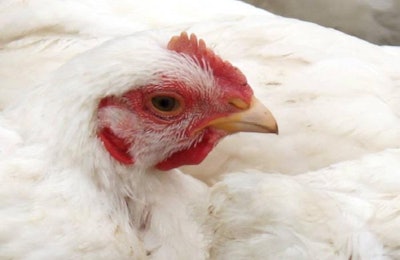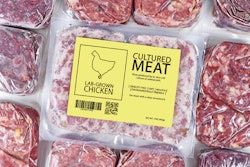
With the aim to improve the nation’s self-sufficiency in poultry production, the government of Ghana has undertaken to invest a significant sum in the sector.
This amounts to US$541 million, reported TheBF&T earlier this week. Funding will go into expanding domestic chicken meat production, boosting competitiveness, and adding value to products.
From the current level of 50,000 metric tons (mt) per year, the target for domestic output is 450,000mt, according to Robert Ankobia. He is the chief director at the Ministry of Food and Agriculture. In financial terms, this will raise the value of domestic production to US$562 million from the present-day figure of US$62 million, he said.
In order the meet local demand for the country’s most popular meat, Ghana has been importing chicken meat. At an annual cost of around US$600 million, these imports are hitting the nation’s foreign currency reserves, as well as threatening food security.
Ghana’s poultry farmers are hoping this investment will restore the sector’s fortunes.
Currently, the industry is on the verge of collapse, according to Victor Oppong. As president of the Ghana National Poultry Farmers Association, he blamed the industry’s problems on imports of frozen chicken meat at lower prices than domestic product.
Of the total to be invested by the government, BF&T reports that more than 80% will be channeled into improving access to finance, as well as cost-sharing support for private investment in hatcheries and production expansion. The feed sector is set to gain a 13% share to increase output and modernize with the aim to reduce the cost of poultry feeds. Meanwhile, the rest of the government investment will go into technical programs to improve animal health and welfare, as well as supporting small and medium-sized enterprises (SMEs) to enter allied industries such as slaughtering and packaging.
In 2021, chicken meat production in Ghana was 74,000mt, according to the statistics arm of the United Nations’ Food and Agriculture Organization, FAOstat. 2021 is the most recent year for which data have been published.
Poultry as a staple food in Ghana
Just last week, the Development Bank of Ghana (DBG) announced it is providing additional support for the growth in the country’s agriculture sector. Following study of the whole sector, the DBG has identified poultry, soybeans, maize (corn), and rice as areas that most contribute to food insecurity in Ghana.
Output expansion has stalled, and these products are contributing to high and rising food costs, according to one of the bank’s economists.
DBG is set to offer more support to the government and the private sector financing these key areas. Ultimately, the goal is for Ghana to produce sufficient quantities of these four food staples to supply its own population, and to export the surplus.
Avian flu in Ghana’s poultry sector
Over the past five years, avian flu outbreaks have been reported on Ghanaian poultry farms, according to the United Nations’ Food and Agriculture Organization (FAO). Along with many other countries in sub-Saharan Africa, the virus detected was the H5N1 serotype of the highly pathogenic avian influenza (HPAI).
Up to February 9, Ghana had reported no cases during the current disease wave, which began in October of 2022.
Latest cases officially registered by Ghana with the World Organisation for Animal Health were found in six village flocks during June of 2021. Five of these were in the Greater Accra region – near the capital city — and one was in the Central region.
In May of 2022, FAO reported the country’s total at 82 outbreaks since October of 2021, with cases in eight regions.
Last month, the chief veterinarian of Greater Accra said that the remaining 138 farmers affected by HPAI in the region will soon receive financial compensation for their losses from the government.
According to a Ghana Business News report in mid-February, 200 farms had been hit by HPAI in the region since July of 2021. As a result, almost 363,000 poultry were destroyed, 107,000 died, and more than 255,000 have been depopulated.
The official attributed the spread of HPAI on poor biosecurity standards at most poultry farms.














